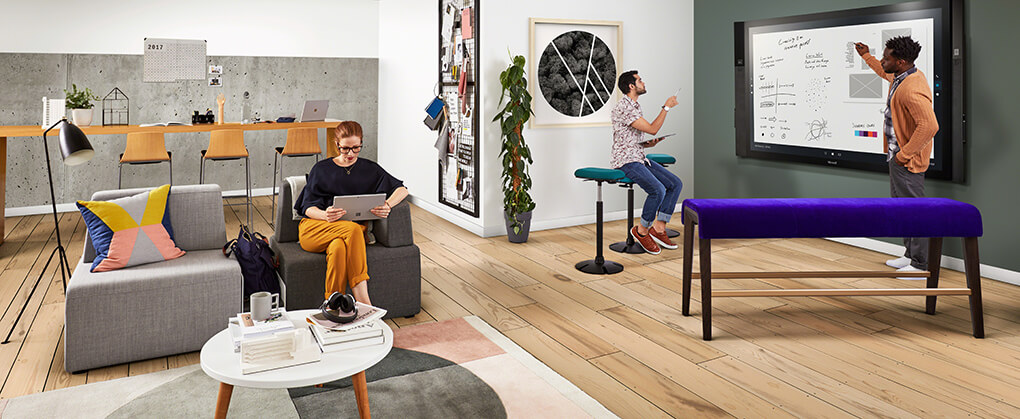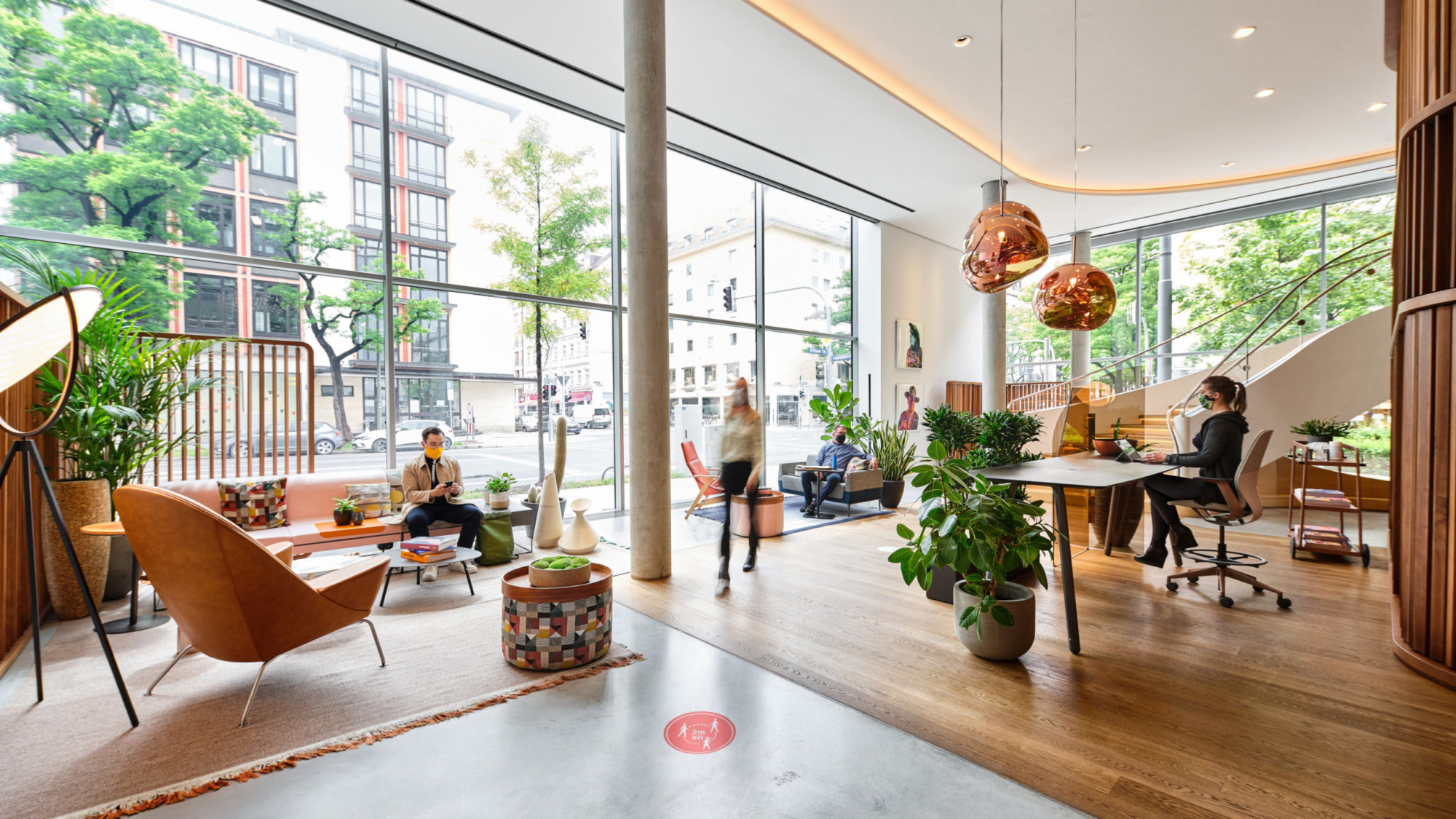Why do we miss the office?
And will we still love it when we return?
The simple joy of coffee with coworkers in the café. Sketching out ideas on whiteboards, post-it notes and digital displays in comfortable meeting spaces. It’s the collective energy and vibe of a space full of people united in a common purpose.
Though we’re successfully getting some types of work done remotely and over video, we’re struggling with the generative work that creates new ideas and solves complex problems. And we are missing the intrinsic human experience of working together – face-to-face – in spaces that were designed specifically to foster the creativity, agility and innovation that organizations need to be truly productive and grow.
It’s clear that social connection builds trust and strong bonds. But our ability to adapt to working remotely is reliant upon the relationships built over time through the spontaneous interactions and relaxed conversations that happen in person – in a conducive environment. The informal, shared spaces – or ancillary spaces – where we socialized, collaborated, focused and rejuvenated, enhanced our work experience before COVID-19 sent us all home.
But when we return, will these spaces that we love go away because of safety concerns? Or will they change?
After months working apart, employees now say the main reason they want to come back to the office is to be with other people, socialize and collaborate in ways that just aren’t possible remotely. That’s why a diverse range of spaces in the office that support these work modes, and collaboration in particular, will not go away. What’s more, they are likely to be even more desired. But they will have to evolve now and for the near term to meet the new requirements of the post-COVID workplace.
Coming together in the workplace to socialize and collaborate will become the greatest purpose that the new office can fulfill.
The shared spaces that support this purpose also bring a welcomed warmth and energy to the workplace. We’ll continue to be drawn to those spaces that bring us together in more residentially-inspired, comfortable settings which also support our performance. But the attributes that make these spaces desirable – softer furnishings, lush materials, crafted finishes – must also consider new safety concerns. Now, shared spaces must pivot towards supporting the physical distancing and cleaning protocols that are required to create a safer work environment. These spaces that employees most enjoy must be adapted or created to not only enhance productivity but to ensure that the people using them can be safe and feel safe too.
We’re striving to balance the need for compelling spaces with the need for safety.
Not just the sense of psychological safety that fosters good social interactions when people feel at ease – but the physical distancing and provisions needed to ensure they are safer. At the same time, shared spaces need to perform – more than ever, which is why we use the following design strategies to guide more effective outcomes.
PERFORMANCE PRINCIPLES
Prior to COVID-19, Steelcase’s research generated a series of performance principles to guide the design of shared spaces that are both desirable and productive places to work. In the post-COVID-19 world, these principles remain the foundation for designing high-performing social and collaborative spaces, yet pose new design challenges that can be solved by addressing density, geometry and division:
Proximity
Proximity and density go hand in hand – and pose some of the greatest design challenges for shared spaces that are intended to bring people together.
The proximity of people-to-people must now consider adequate physical distancing.
The proximity of people-to-technology and tools for meeting in open spaces must match the provisions of enclosed spaces and simultaneously accommodate remote participants.
And the proximity of furniture-to-furniture must consider density and adjacencies in new ways – and cue distancing behaviors.
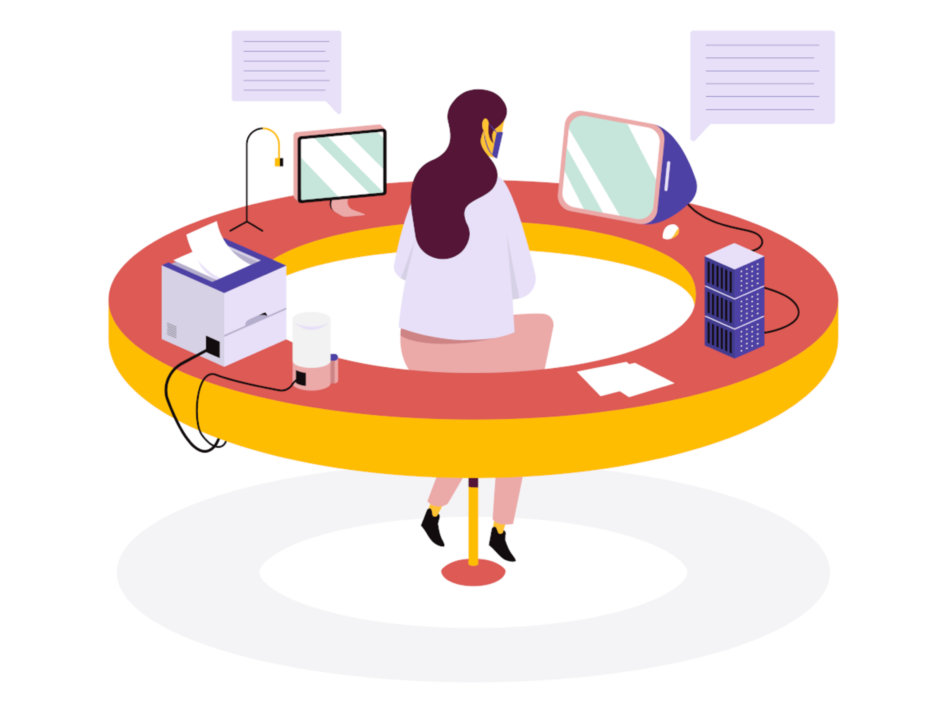
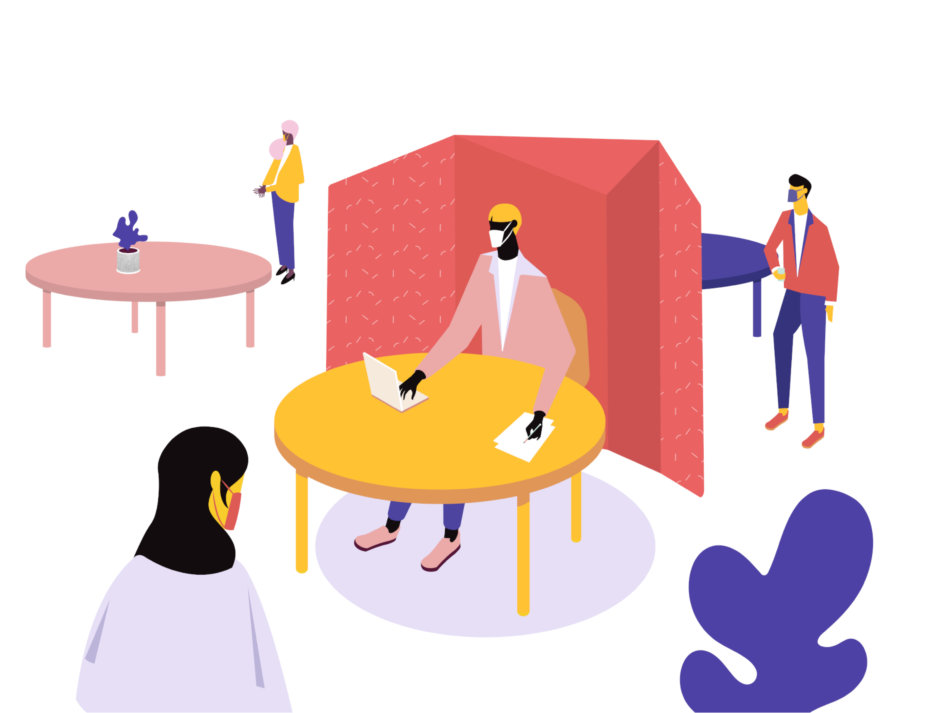
Privacy
Privacy – acoustical, visual, informational, territorial – is still critical to making today’s shared spaces productive. Each form of privacy contributes to creating a sense of psychological comfort and security – helping people feel at ease, free to share ideas and make work visible.
But territorial privacy takes on additional significance for safety. Screens, or adding division, can not only help you claim a space but also create boundaries to protect users from people in adjacent workspaces or direct traffic flow.
Posture
Providing a range of postures – seated, stool height, lounging, perching, standing – enable different kinds of work to happen more effectively, and contribute to health and wellbeing.
A variety of seating types can provide more flexibility in creating greater or less distance – and enable changes in the geometry of furniture arrangements, as needed.
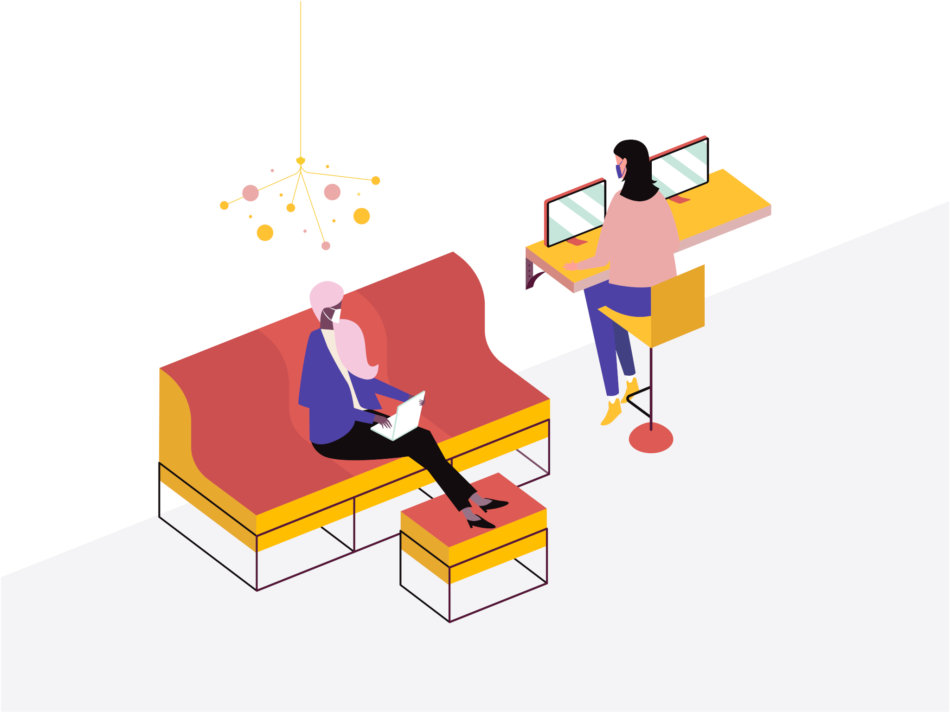

Personality
The aesthetics of shared spaces often drive design – to help set the tone for an organization’s brand and culture. And that connection to identity is a draw for employees. While research continues on virus transmission through surfaces, the pandemic has created a new focus on cleanability for the residentially-inspired fabrics and finishes of today’s shared spaces.
Wellbeing
Shared spaces can also further enrich employee wellbeing by design. They can make us feel better.
A range of postures can encourage active collaboration or relaxed conversation – reducing the physical stress that affects productivity.
Introducing biophilia by bringing the outdoors in through living walls and natural materials, patterns and palettes can contribute to better health and wellbeing – both by improving air quality and connecting us to the calming effects of nature.
And research is showing that being outdoors with access to fresh air is not just good for our state of mind but may be inherently safer than indoor environments due to air flow. Leveraging outdoor spaces to create areas for socializing and collaborating provides even greater choice for safer work environments.

Moving forward, organizations will value offices as a critical tool to remain competitive by fostering innovation for growth that can only be achieved when people work effectively together — face-to-face — to get the hard work done. And employees need both to be reassured that it’s safe to return and inspired to return to a compelling environment that supports their physical, cognitive and emotional wellbeing – a place where they want to be rather than where they have to be. A place that fulfills their innate human need for connection, a shared sense of purpose and community. A place they love.
To know everything about tomorrow’s world of work, we strongly recommend the ultra-documented reading, the 306° magazine of our partner Steelcase!
Pictures & article: Steelcase



